Yesterday, I attended the Houston Interactive Marketing Association’s annual conference titled Interactive Strategies 2013: Marketing in a Multi-Screen World. You may have heard about it on Twitter.
It was a great learning experience and I met many people who work in the business of online marketing in the Houston area.
The following is a recap of notes I took during the event.
See photos from the event on the HiMA Facebook page.
The photos here were taken with my Google Nexus 7.2 – the single device I used throughout the conference to take notes, photos and live tweet (@uhbauerredesign). So, yeah — the photos are kind of blah.
Tae E. Kim
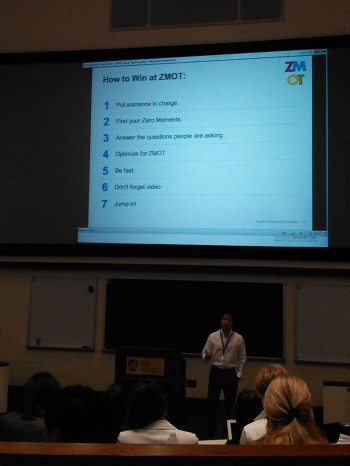
Tae E. Kim, Head of Channel Partnerships in North America at Google, was the keynote speaker at the conference.
His talk kicked off the event and he focused on tailoring marketing campaigns and online presence to win the moments that matter most.
Kim outlined steps to win in the Zero Moment of Truth (link to zeromomentoftruth.com), a concept Google coined to describe how consumers now discover new products and services online. Top on the list: Putting someone in charge. “If everyone is in charge, no one is in charge,” Kim said.
The Evolved Mobile Experience panel
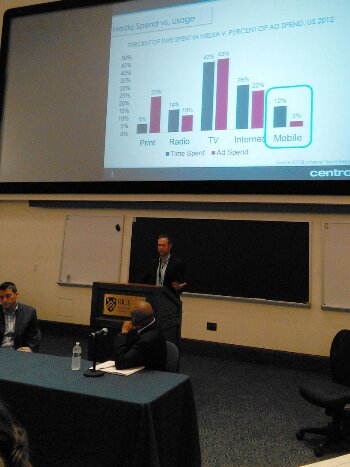
Paul Tapscott, Director of Mobile at marketing firm CENTRO, moderated a panel discussion about the evolved mobile experience.
Tapscott presented really great slides about where the industry is right now, and panelists Paul Simmons from Celtra and Brian Kilmer from Paypal Media Network offered colorful antidotes about specific campaigns they’ve worked on and experiences with clients interested in making an impact in the mobile space.
Here are some interesting things I heard during the discussion:
-Tablets are the fastest growing technology in the history of technology
– We check our mobile phones 150+ times a day
– Mobile does some things really well. Others – not so much.
– “Don’t just slap a static banner on the page and be shocked when you don’t get engagement.”
– Display interactive HTML5 content within Facebook or Twitter – where the audience already is. You’ll get higher engagement.
– Are you helping consumers save time or money?
Keynote Panel
The after-lunch keynote was a panel discussion moderated by HiMA President and University of Houston C. T. Bauer College of Business adjunct Kelsey Ruger.
The discussion featured Jay Steinfeld, Blinds.com; Jim “Mattress Mack” McIngvale, Gallery Furniture; Susan Saurage-Altenloh, Saurage Research; and Brent Richey, Tapad.
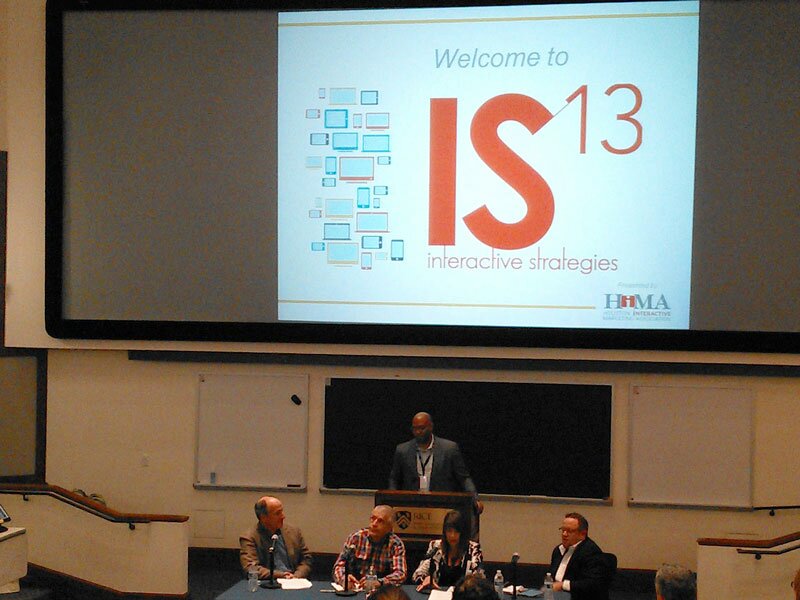
Steinfeld said it is important to experiment without the fear of failure – and he said his company is working to improve the conversion rate of its website on mobile devices. He also said that sending direct mail to lists his marketing efforts didn’t create has never worked.
McIngvale said they’re working on making the web as exciting as the store experience, but he said it’s hard to get the monkeys, birds and play area for the kid on a mobile phone.
Richey said tablets are changing everything and he stressed the importance of aligning your creative work with your business and marketing objectives.
Yoel Kluk
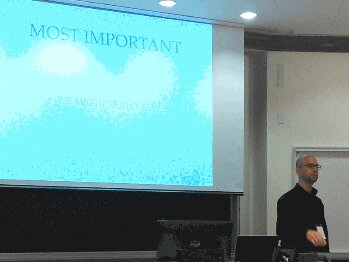
Yoel Kluk, Director of Global Consulting Services at Grupo-Piensa, presented “The Power of Human Center Innovation to Fuel Your Marketing Campaign.”
Kluk champions empathy, the acknowlegment that the user is always right, and stresses the importance of an open mind … and scope.
“I want to know what makes my customers yell … in excitement,” Kluk said. “Marketing is about understanding people. If we only focus on the product, we are misreading it.”
Justin Segal
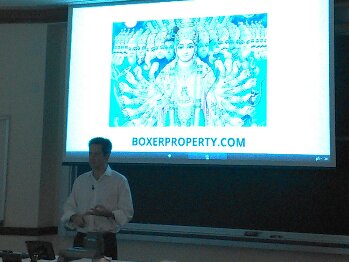
Another breakout session I attended was led by Boxer Property COO Justin Segal – I was interested in this speaker because of my prior experience in the real estate business when I worked in the marketing department at RE/MAX of Texas.
Boxer Property is a commercial real estate and property management firm founded by friends in the early 1990s, and its first project was attempting to lease a downtown Dallas office building that had been vacant for six years prior.
“We know we couldn’t become what we wanted to be by doing what everyone else was doing,” Segal said. “Our whole business was built on going direct to tenants.”
Segal focused his session on the company’s many efforts to develop interactive apps for mobile devices – at first, they just wanted to be in the app store.
“It was a quick and easy tenant app – it allowed us to collect email addresses and allow tennants to send messages to us,” Segal said.
Now they’re working on a comprehensive app and website for all of their audiences and needs.
“You have to decide which audience gets priority,” Segal said. “(Our development team) has a monthly prioritizing meeting. We don’t schedule development cycles because priorities change so quickly.”